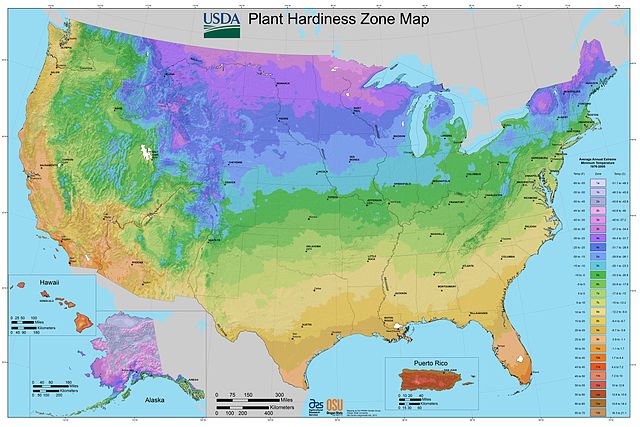Plant hardiness zones, also known as growing zones, are geographical areas defined by climatic conditions that determine the specific types of plants likely to thrive there. These zones, typically defined by minimum temperatures, can be instrumental for gardeners and farmers planning their plantings. This article will provide an overview of plant hardiness zones and their significance in successful gardening.
Understanding Plant Hardiness Zones
The most widely used hardiness zone system in the United States is the USDA Plant Hardiness Zone Map, developed by the United States Department of Agriculture. This map divides North America into 13 zones, with Zone 1 being the coldest, where temperatures can plummet to below -50 degrees Fahrenheit, and Zone 13 being the warmest, where the minimum temperature is 60 degrees Fahrenheit.
Each zone represents an average annual extreme minimum temperature, with a 10-degree Fahrenheit difference from one zone to the next. Furthermore, the zones are also divided into “a” and “b” to provide more detailed information. These sub-zones represent a 5-degree Fahrenheit difference within the main zone.
Importance of Plant Hardiness Zones
Understanding plant hardiness zones is crucial for several reasons:
- Successful Gardening: Knowing your zone can help you choose plants more likely to thrive in your specific location. It allows you to understand if a plant can survive the typical lowest winter temperature in your region.
- Planning and Planting: Different zones have different planting schedules. The knowledge of your zone helps you plan when to plant certain crops to ensure they aren’t affected adversely by the local climate.
- Conservation of Resources: Planting species adapted to your zone can conserve water and other resources, as these plants would naturally thrive in the existing conditions.
- Predicting Plant Growth and Survival: The zones can provide a good prediction of a plant’s ability to survive and grow in a given area.
Finding and Utilizing Your Zone
To determine your hardiness zone, you can refer to the USDA Plant Hardiness Zone Map, available online. By entering your zip code, you can find out your specific zone. When selecting plants, check the plant’s tag or description to see its hardiness zone range.
It’s important to remember that while hardiness zones are a useful tool, they are not the only factor that determines a plant’s success. Other conditions such as soil quality, sunlight, humidity, wind exposure, and precipitation also play a significant role.
A Word of Caution
While hardiness zones can be extremely useful in determining what plants will survive in a certain location, they do not take into account the occurrence of unexpected extreme weather conditions. Therefore, even within a specific hardiness zone, gardeners should be prepared for unexpected weather fluctuations.
In conclusion, plant hardiness zones are a valuable tool for gardeners, allowing them to select plants likely to flourish in their local climate. By understanding and using these zones, gardeners can enhance their gardening success and contribute to a healthy, biodiverse environment.
